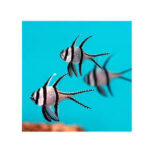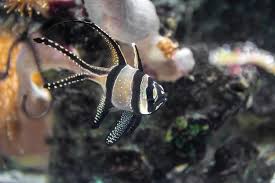The dragon is one of the most enduring and powerful symbols in human history. Across cultures, it has represented strength, wisdom, protection, and transformation. In Chinese culture, the dragon holds a particularly esteemed place, influencing not just mythology but also art, folklore, literature, and traditional performances.
This article explores the deep impact of dragons on artistic expressions and folklore, highlighting their role in paintings, sculptures, literature, storytelling, and cultural traditions.
I. The Dragon as a Central Figure in Chinese Art
Dragons have been an essential part of Chinese artistic traditions for thousands of years, appearing in imperial palaces, temples, and everyday objects.
1. Dragons in Traditional Chinese Paintings
Chinese paintings often depict dragons flying through the clouds, emerging from the sea, or coiling around mountains. These images symbolize:
- Power and authority, especially for emperors who were considered “Sons of the Dragon.”
- Nature’s harmony, as dragons control rain and water.
- Cosmic balance, representing the union of Yin and Yang.
Famous dragon-themed paintings include:
- “Nine Dragons” (九龙图, Jiǔ Lóng Tú) – A Song Dynasty scroll painting featuring dragons in swirling clouds, showcasing their divine energy.
- Emperor’s Dragon Robes – Dragons were often embroidered onto silk robes of emperors, reinforcing their celestial power.
2. Dragons in Chinese Ceramics and Sculptures
Dragons appear in ceramic designs, jade carvings, and bronze sculptures, often symbolizing:
- Protection (e.g., dragon motifs on temple doors).
- Good fortune (e.g., dragon-adorned vases in households).
- Imperial authority (e.g., dragon-shaped throne decorations).
Notable examples include:
- Ming Dynasty Porcelain – Exquisite blue-and-white dragon-patterned porcelain plates were used in royal banquets.
- The Nine-Dragon Wall (九龙壁, Jiǔ Lóng Bì) – Found in Beijing’s Forbidden City, this wall features nine intricately carved dragons, each symbolizing different aspects of cosmic power.
3. Dragons in Calligraphy and Symbols
In traditional calligraphy, the character for “dragon” (龙, lóng) is often stylized into fluid, swirling shapes, mimicking the mythical creature’s movement. Dragon seals and emblems were used by emperors to assert divine rule, further embedding dragons into the artistic landscape.
II. Dragons in Chinese Folklore and Mythology
Dragons are deeply woven into Chinese folklore, appearing in creation myths, heroic tales, and legends of divine beings.
1. The Dragon as a Creator and Protector
In Chinese mythology, the Dragon Kings (龙王, Lóngwáng) govern the seas and control rain and weather, ensuring agricultural prosperity. The most well-known is:
- The Azure Dragon (青龙, Qīnglóng) – Guardian of the East, associated with spring, renewal, and growth.
Another myth describes Nuwa and Fuxi, the legendary ancestors of humanity, often depicted with serpent-like dragon bodies, emphasizing the dragon’s role in creation and wisdom.
2. Dragons in Legends of Heroes and Emperors
Dragons often appear in tales of legendary figures, granting them power, wisdom, and protection. Examples include:
- The Legend of the Yellow Emperor (黄帝, Huángdì) – The first emperor of China is said to have ascended to heaven on a dragon’s back after unifying the nation.
- The Story of Lü Dongbin (吕洞宾) – A famous Taoist immortal who once rode a dragon across the sea, demonstrating the dragon’s association with spiritual enlightenment.
3. The Dragon and the Chinese Zodiac
Among the 12 animals of the Chinese zodiac, the dragon is the most powerful and revered. Those born in the Year of the Dragon are believed to inherit:
- Strength, intelligence, and charisma.
- Good fortune and leadership abilities.
- A natural connection to the elements of power and success.
Many parents hope for a “Dragon Year baby”, believing it brings prosperity and longevity.
III. Dragons in Traditional Festivals and Performances
1. The Dragon Dance and Its Cultural Significance
One of the most famous dragon-related traditions is the Dragon Dance (舞龙, Wǔ Lóng), performed during:
- Chinese New Year to drive away evil spirits and welcome prosperity.
- Harvest Festivals to ensure abundant crops.
- Weddings and Celebrations for blessings and happiness.
Dragon dances feature long, colorful dragon figures controlled by dancers, moving in rhythmic, serpentine motions to the beat of drums and gongs.
2. The Dragon Boat Festival
The Dragon Boat Festival (端午节, Duānwǔ Jié), held on the 5th day of the 5th lunar month, honors:
- Qu Yuan, a patriotic poet who drowned himself in protest against corruption.
- Water dragons, believed to protect against disease and misfortune.
During the festival, people race long dragon-shaped boats, eat zongzi (sticky rice dumplings), and drink realgar wine, which is said to repel evil spirits.
3. Dragon Symbolism in Weddings and Funerals
- Weddings – Dragon and phoenix motifs represent the balance between male and female energy, symbolizing a harmonious marriage.
- Funerals – Dragons are sometimes invoked in ancestral rites to guide spirits to the afterlife, ensuring a smooth transition.
IV. Dragons in Modern Chinese Culture
Even today, dragons remain deeply embedded in Chinese society, influencing branding, architecture, and contemporary storytelling.
1. Dragons in Popular Culture and Media
Modern representations of dragons appear in:
- Movies and TV – Films like Crouching Tiger, Hidden Dragon and Nezha reimagine dragon mythology for new generations.
- Video Games – Many RPGs and fantasy games feature Chinese dragons as powerful guardians or wise mentors.
- Literature and Comics – Stories like Journey to the West depict dragons as mystical beings that assist or challenge heroes.
2. Dragons in Architecture and Urban Design
- Dragon pillars and rooftops adorn temples and government buildings, symbolizing prosperity and protection.
- Modern skyscrapers are designed with dragon-like curves and motifs, reflecting strength and ambition.
A famous example is the Bank of China Tower in Hong Kong, whose shape is inspired by the dragon’s energy and Feng Shui principles.
3. Dragons as National and Business Symbols
- China is often called the “Dragon of the East”, representing its strength and influence.
- Luxury brands incorporate dragons in designs to appeal to Chinese cultural heritage and symbolism.
- The Dragon Dance remains a central feature in major international events, from the Olympics to trade expos.
Conclusion: The Enduring Legacy of the Dragon
From ancient folklore to modern media, dragons remain a timeless symbol of power, wisdom, and protection. Their presence in art, mythology, festivals, and contemporary culture demonstrates their enduring importance in Chinese identity and heritage.
As China continues to evolve, the dragon’s influence will remain strong, bridging the past, present, and future of Chinese culture.










